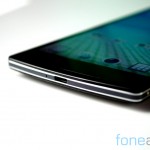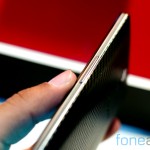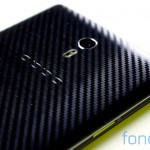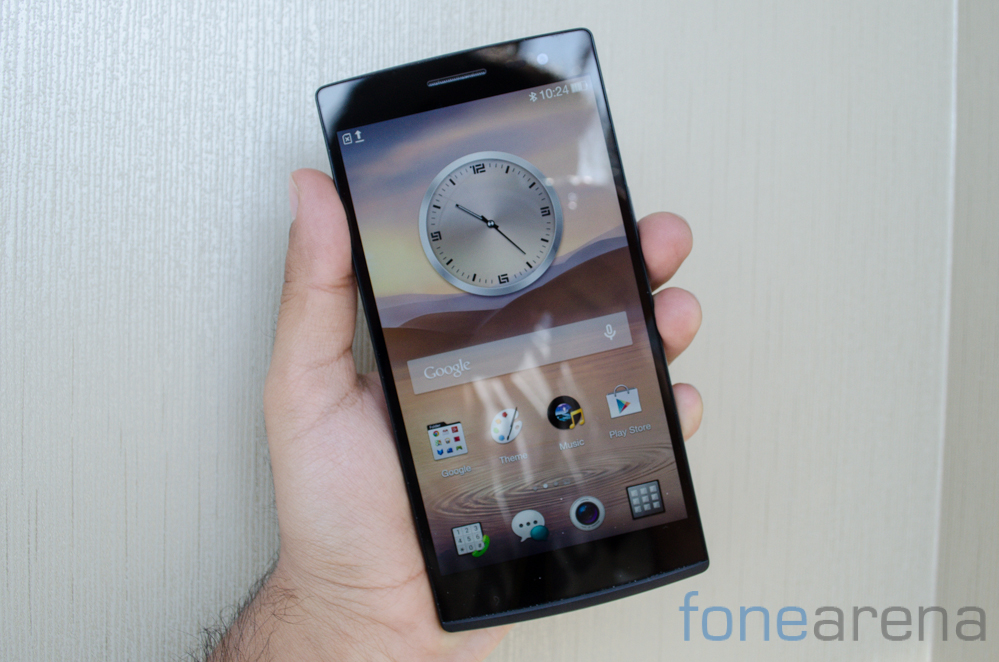
At an event in Beijing, we just witnessed the launch of Oppo’s next flagship device. Dubbed the Find 7, the phone combines some hardware firsts with a range of software innovations to create a very intriguing product. Indeed, the phone brings some very tangible hardware innovations to create a smartphone that is geared towards giving users improvements that come in handy for day to day usage. We got to spend some time with the China spec variant of the device and here are our impressions.
httpv://www.youtube.com/watch?v=t_zynOqhSZQ
The design team at Oppo is clearly inspired by the likes of Apple, Nokia and HTC to create a design identity for their products. The Oppo Find 7 too has a design that flows with the existing brand identity yet manages to stand out on it’s own merit. The front of the phone is mostly comprised of the 5.5 inch display which is unique in the fact that it amongst the first few devices in the work to sport a 2K display. In the brief amount of time we’ve spent with the handset, the display really stood out as being absolutely stunning. While the difference between 2K and Full HD panels is minimal for sure, it is noticeable on close inspection. This is something that we’ll be focussing on in our review but in our brief time with the handset, the screen appeared bright, vibrant and had fantastic viewing angles. The crisp 534ppi pixel density makes reading on the handset a very enjoyable experience.
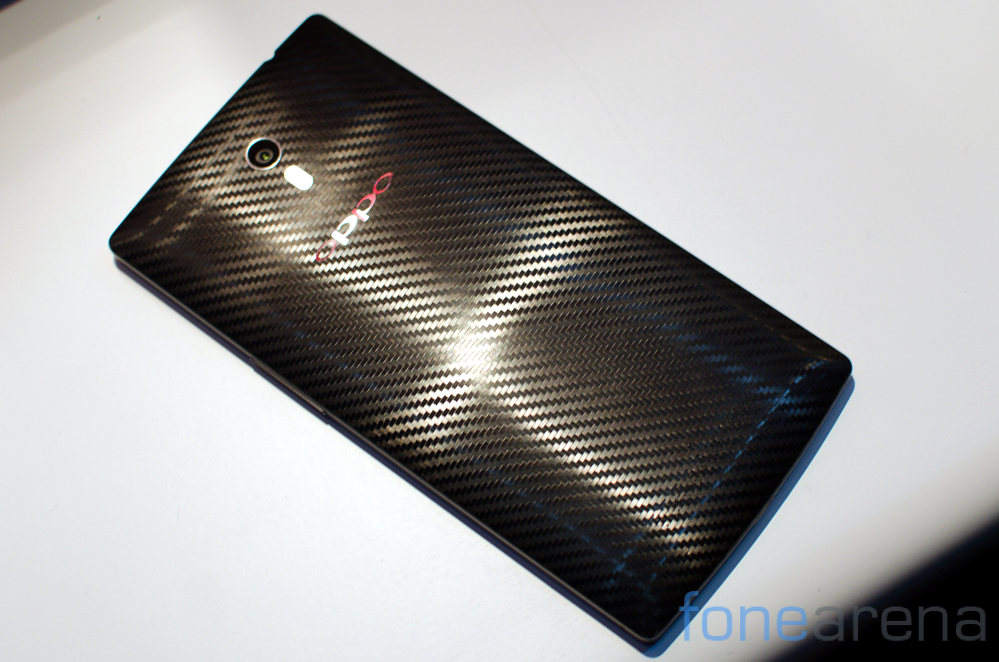
The construction of the phone is of aircraft grade titanium-aluminum alloy and it feels exceedingly good in the hand. The Find 7 is available in a carbon fibre like finish and also a white variant. The ‘lower’ spec Find 7a on the other hand opts for a slate grey body. Despite opting for a very large 5.5 inch panel, the phone generally fits quite well in the hand. Slim bezels result in a size that is about the same as the Galaxy Note 3 and so it is somewhat possible to use it in one handed though that is certainly not the most convenient use case. Oppo has hidden away all the slots inside the rear panel and using a pin to press the recessed clip pops open said panel. Under here you’ll find the SIM card slot, the memory card slot as well as the 2,800/3,000 mAh (depending on variant) battery which can be removed.
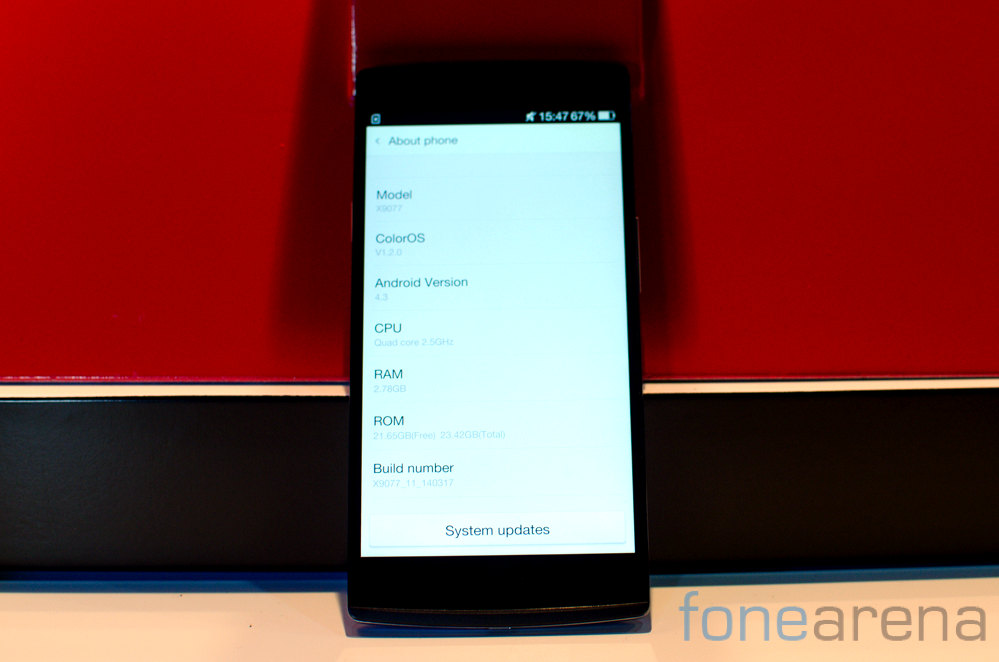
Depending on the variant that you get, the Oppo Find 7 will be powered by two different processors. The higher spec model with the 2K display will have a 2.5GHz Snapdragon 800 processor. This is paired with 3GB of RAM and 32GB of storage. The lower spec phone will drop this down to 2GB of RAM and a 2.3Ghz Snapdragon 800 processor. Connectivity options onboard include LTE, WiFi 802.11ac, Bluetooth 4.0. Perhaps one of the most tangible additions to the Oppo Find 7 is the VOOC flash charge technology built into the handset. Using a 7 pin cable, the charge speed can be adjusted on the fly and boosted by up to 400%. What this entails is that if you use the approved fast charge cable, you’ll be able to get 2 hours of calling time out of a 5 minute charge. 5 security layers in the handset ensure that the fast charge tech is safe to use and it’ll let you reach 75% charge within half an hour. Software onboard the phone is Android 4.3 with Color OS v1.2 built into the phone on top of that. The phone will however be getting a substantial update to Color OS v2.0 by the time it is launched in India.

The other feature that is of interest is the camera module. Using an innovative mix of software trickery and a competent sensor, the Find 7 can shoot up to 50MP photos. The 13 megapixel Sony IMX214 CMOS sensor paired with an f/2.0 lens results in surprisingly good images. What really sets it apart however is the 480 megapixel per second bandwidth that let’s Oppo shoot 10 full resolution shots within a second or so. It then picks the best 4 shots and combines them into a 50MP shot which preserves a huge amount of detail.
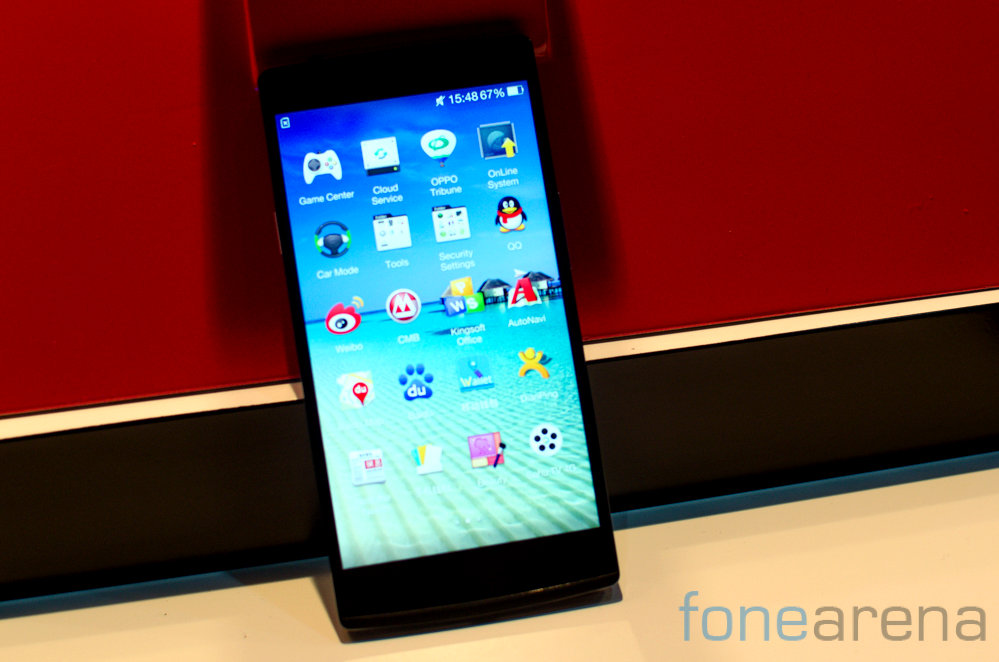
Without a doubt, the Oppo Find 7 sets a benchmark for what flagship devices in 2014 will have to offer to stand out for consumers. Our initial impressions of the device are very positive and we can’t wait to put the handset through its paces. Check out this space for the full review soon. Got questions? Let us know in the comments section.

